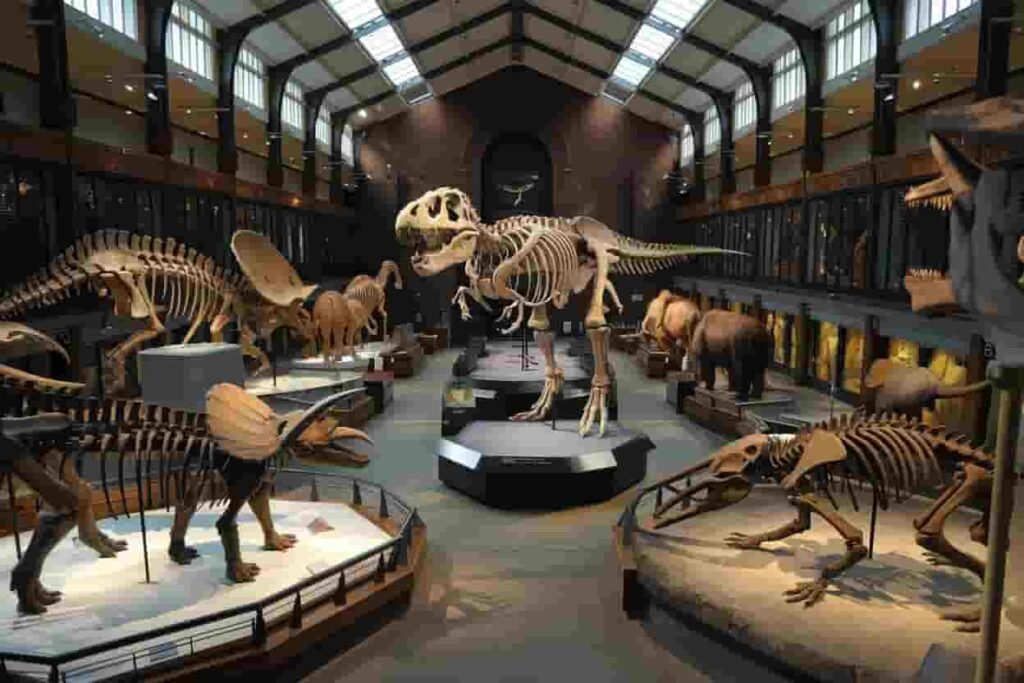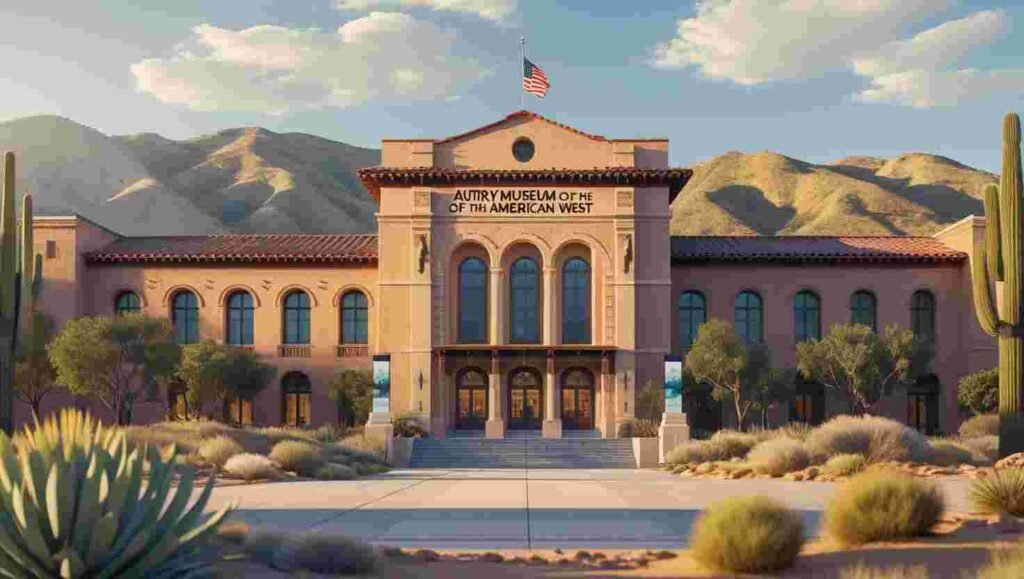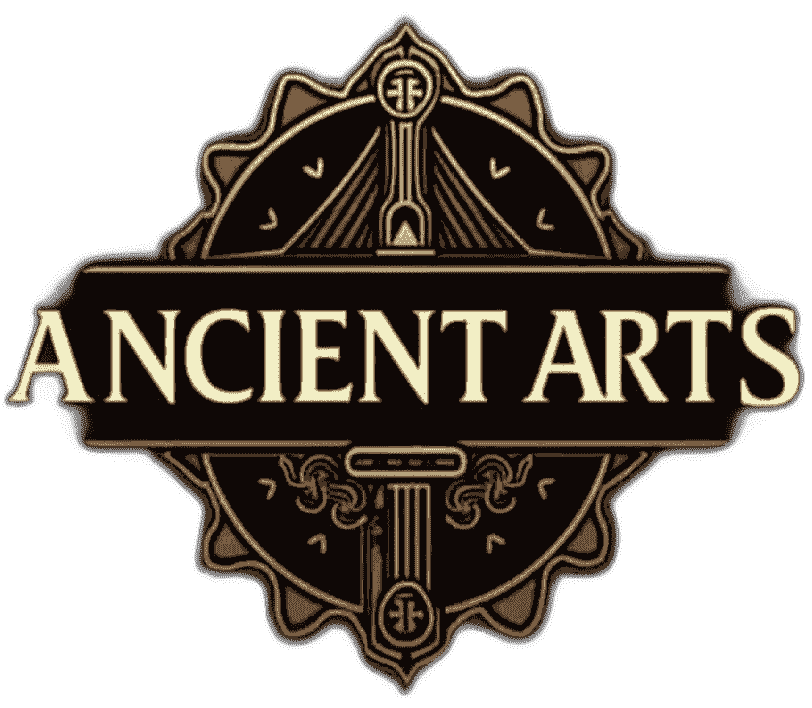Introduction
The Chrysler Museum of Art stands as a cultural cornerstone in downtown Norfolk Virginia drawing art enthusiasts from across the globe. This prestigious institution houses over 30000 objects spanning 5000 years of history making it one of the most significant art collections in the Southeastern United States. Founded through the generous donation of Walter P. Chrysler Jr. the museum has evolved into a vibrant center for artistic expression education and community engagement. Visitors discover world-class exhibitions innovative educational programs and breathtaking architecture that together create an unparalleled art experience in the heart of Hampton Roads.
The Rich History of the Chrysler Museum of Art
Origins and Founding
The story of the Chrysler Museum begins in 1971 when automotive heir Walter P. Chrysler Jr. donated his extensive art collection to the Norfolk Museum of Arts and Sciences. This transformative gift included nearly 10000 objects representing diverse periods styles and cultures. The son of automobile manufacturer Walter P. Chrysler Sr. the younger Chrysler developed a discerning eye for art from an early age. His collection reflected remarkable breadth with particular strength in Art Nouveau glass American and European paintings and ancient artifacts.
Prior to Chrysler’s donation the museum operated on a much smaller scale since its founding in 1933. The institution originally occupied the Norfolk home of William Sergeant at 400 East Freemason Street before moving to its current location in the Italianate style building that once housed the Norfolk Academy. The dramatic expansion of both the collection and the facility following Chrysler’s gift elevated the museum to national prominence.
Architectural Evolution
The Chrysler Museum occupies an imposing Italianate structure dating from 1879 that has undergone several major renovations. The most significant expansion occurred between 2012 and 2014 when the museum completed a $24 million renovation project that added 8000 square feet of gallery space redesigned the entrance and significantly enhanced accessibility features.
The renovation maintained the historic character of the original building while introducing modern elements that improved visitor flow and exhibition capabilities. Large glass walls now connect the museum to its surrounding landscape creating a dialogue between the art inside and the natural beauty of the adjacent Hague waterfront.
In 2017 the museum further expanded its footprint by opening the Perry Glass Studio a state-of-the-art facility located across the street from the main building. This working studio offers visitors the opportunity to observe glass artists in action and even participate in glassmaking through various workshops and demonstrations.
Exploring the Collection
European Art Masterpieces
The European art collection represents one of the museum’s greatest strengths spanning from medieval times through the 20th century. Visitors encounter masterpieces by renowned artists including:
Peter Paul Rubens whose dynamic baroque style comes alive in “The Return from Egypt” Henri Matisse with his vibrant use of color exemplified in “The Yellow Curtain” Eugène Delacroix whose romantic sensibilities shine in “Christ Asleep During the Tempest”
The collection particularly excels in representing French academic painting Italian Renaissance works and Dutch Golden Age masterpieces. The museum arranges these works chronologically allowing visitors to trace the evolution of European artistic movements through the centuries.
American Art Treasures
The American art collection showcases the nation’s artistic development from colonial portraiture through contemporary expressions. Notable highlights include works by:
Winslow Homer whose dramatic seascapes capture the power and mystery of the American coast Mary Cassatt with her intimate depictions of domestic life and motherhood Edward Hopper whose paintings evoke the solitude and quiet drama of modern American life
The museum dedicates significant space to American Impressionism the Ashcan School and early Modernist movements. Regional artists particularly those connected to Virginia and the Hampton Roads area receive special attention providing context for the museum’s place within the local cultural landscape.
World-Renowned Glass Collection
Perhaps the most celebrated aspect of the Chrysler Museum the glass collection ranks among the finest in the world. Spanning ancient Roman vessels to contemporary studio glass this collection offers a comprehensive view of glassmaking throughout human history.
The collection excels particularly in:
Art Nouveau glass including masterpieces by Emile Gallé Louis Comfort Tiffany and the Daum brothers Ancient Roman and Islamic glass showing the earliest sophisticated glassmaking techniques Contemporary studio glass featuring works by Dale Chihuly Harvey Littleton and Lino Tagliapietra
The glass galleries underwent significant reorganization during the 2014 renovation creating thematic displays that highlight technical innovations aesthetic developments and cultural contexts. Interactive stations throughout these galleries explain glassmaking techniques further enriching visitor understanding.
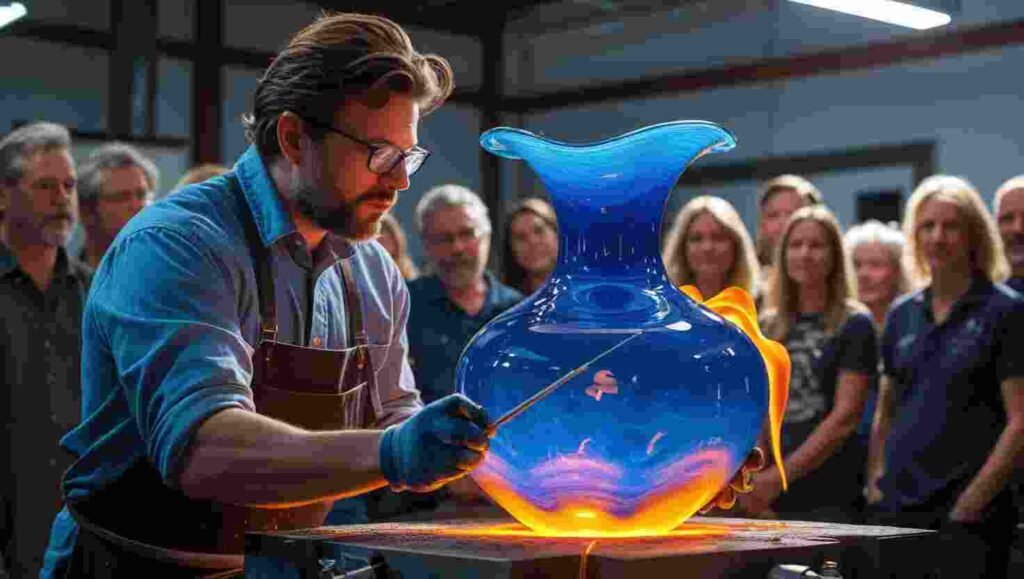
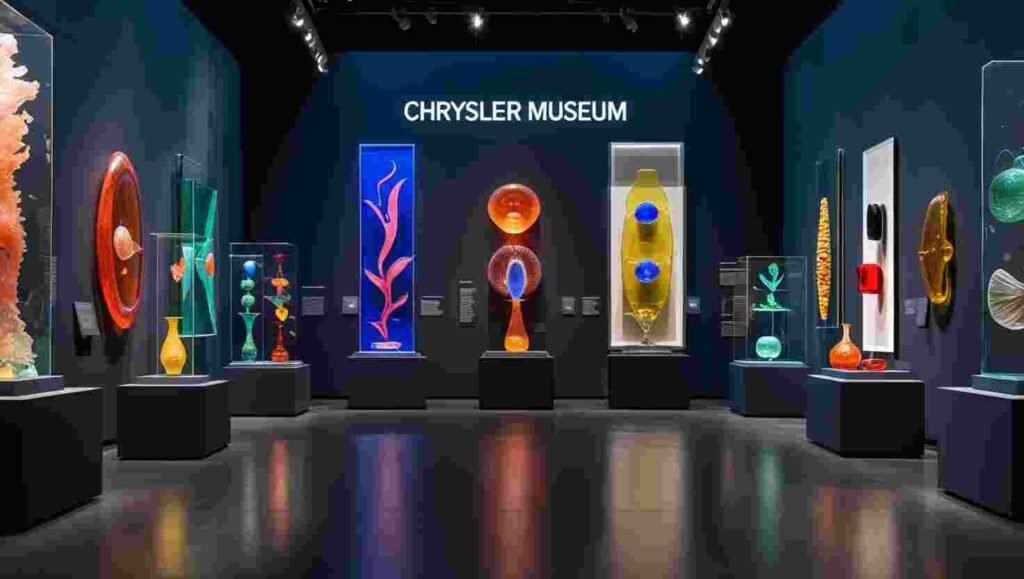
Photography and Contemporary Art
The photography collection has grown significantly in recent decades now encompassing works from the earliest daguerreotypes to digital innovations. The museum regularly rotates these light-sensitive works presenting thematic exhibitions that explore photography’s artistic development and cultural impact.
Contemporary art receives increasing attention at the Chrysler with dedicated gallery spaces showcasing diverse voices in current artistic practice. The museum actively acquires works by emerging artists particularly those from underrepresented groups ensuring the collection remains relevant and inclusive.
Special Exhibitions and Programming
Rotating Exhibition Schedule
The Chrysler Museum maintains a dynamic schedule of temporary exhibitions that complement its permanent collection. These shows range from major international loans to focused examinations of artists movements or themes. Recent exhibitions have included:
“Edward Steichen: In Exaltation of Flowers” featuring rarely seen mural paintings by the famed photographer “Thomas Jefferson Architect” exploring the founding father’s contributions to American architecture “Americans in Spain” examining the influence of Spanish art on American painters
The museum typically organizes three to four major special exhibitions annually supplemented by smaller focused installations. This approach keeps the visitor experience fresh while providing opportunities to showcase different aspects of the collection and bring important works from other institutions to Norfolk.
Educational Initiatives
Education forms a cornerstone of the Chrysler Museum’s mission with programming designed for visitors of all ages and backgrounds. The museum offers:
School tours tailored to Virginia curriculum standards College partnership programs with Old Dominion University Norfolk State University and other regional institutions Adult lecture series featuring scholars artists and curators
The Jean Outland Chrysler Library houses one of the region’s most comprehensive art research collections available to students scholars and interested community members. Educational outreach extends beyond the museum walls through traveling programs that bring art experiences to underserved communities throughout Hampton Roads.
Perry Glass Studio Programs
The Perry Glass Studio represents a unique educational resource offering visitors firsthand experience with the art form that represents one of the museum’s greatest strengths. The studio presents:
Daily glassblowing demonstrations free with museum admission Weekend workshops for beginners through advanced practitioners Third Thursday performances combining glassmaking with music dance and other art forms
The studio serves as both classroom and laboratory pushing the boundaries of contemporary glass practice while honoring traditional techniques. Visiting artist programs bring international glass masters to Norfolk creating opportunities for cultural exchange and artistic innovation.
Visitor Experience at the Chrysler Museum of Art
Gallery Spaces and Layout
The museum organizes its galleries thematically while maintaining a logical flow that helps visitors navigate the extensive collection. The first floor houses ancient art glass collections and special exhibition spaces. The second floor focuses on European and American painting sculpture and decorative arts.
Throughout the museum thoughtful design elements enhance the visitor experience:
Comfortable seating areas encourage contemplation and rest Varied ceiling heights and lighting conditions create appropriate atmospheres for different art forms Strategic sightlines offer unexpected visual connections between works from different periods and cultures
The renovation completed in 2014 significantly improved accessibility with wider doorways enhanced elevator service and ramp access throughout the building. These improvements reflect the museum’s commitment to welcoming all visitors regardless of physical ability.
Digital Engagement Opportunities
The Chrysler embraces technology to enhance visitor engagement offering:
Mobile audio guides providing deeper context for selected masterpieces Interactive touchscreens exploring conservation techniques and artistic processes Digital archives making portions of the collection accessible online
The museum’s Artlab digital studio allows visitors to experiment with creation through digital tools connecting historical art forms with contemporary technology. These digital initiatives extend the museum experience beyond physical visits creating ongoing relationships with art enthusiasts worldwide.
Huber Court and Public Spaces
The dramatic Huber Court serves as the museum’s central gathering space featuring a soaring glass ceiling marble columns and reflecting pool. This impressive space hosts:
Opening receptions for major exhibitions Musical performances by local and visiting artists Community celebrations and private events
Adjacent to Huber Court the museum café offers light refreshments in an art-filled setting overlooking the Hague waterway. The museum store features thoughtfully selected merchandise including books art reproductions and artisanal crafts many created by local makers.
Community Impact and Engagement
Free Admission Policy
Since 2013 the Chrysler Museum has maintained a free general admission policy removing financial barriers to art access. This progressive approach reflects the institution’s commitment to serving as a true community resource. While special exhibitions occasionally require tickets the vast majority of the museum experience remains freely available to all visitors.
This policy resulted from a strategic decision to prioritize accessibility over admission revenue. The museum offset this change through increased membership appeals expanded fundraising efforts and enhanced museum store and café operations. The impact has been dramatic with attendance increasing nearly 40% in the years following implementation.
Diversity and Inclusion Initiatives
The Chrysler actively works to ensure its collections programming and staff reflect the diversity of the Hampton Roads community. Recent initiatives include:
Targeted acquisitions expanding representation of African American Latino Asian American and indigenous artists Community advisory committees informing exhibition development and interpretive strategies Multilingual gallery guides and programs serving the region’s growing immigrant populations
The museum’s “Chrysler for All” strategic initiative established specific goals for increasing diversity among staff board members and volunteers. This comprehensive approach recognizes that meaningful inclusion requires institutional commitment at every level.
Economic Impact on Norfolk
As a cultural anchor institution the Chrysler Museum contributes significantly to Norfolk’s economy and quality of life. Studies indicate that the museum:
Generates approximately $11 million in annual economic activity Supports over 200 jobs directly and indirectly Attracts cultural tourists who typically spend more and stay longer than other visitors
Beyond these quantifiable impacts the museum enhances Norfolk’s reputation as a cultural destination positioning the city competitively for business relocation residential development and tourism growth. The museum’s presence particularly benefits the revitalization of Norfolk’s historic Ghent neighborhood where many visitors explore local businesses before or after their museum visit.
Planning Your Visit
Location and Accessibility
Located at One Memorial Place in Norfolk the Chrysler Museum occupies a prime position adjacent to the picturesque Hague waterway. The museum stands within walking distance of the Ghent neighborhood and approximately two miles from Norfolk’s downtown business district.
Visitors arriving by car find ample free parking in the museum’s main lot. Public transportation options include:
The Tide light rail with the closest stop at York Street/Freemason approximately one mile from the museum Hampton Roads Transit bus routes 1 and 2 with stops within two blocks The Elizabeth River Ferry connecting downtown Norfolk with Portsmouth
The museum building features universal design elements ensuring accessibility for visitors with mobility challenges. Wheelchairs are available free of charge and service animals are welcome throughout the facility.
Hours of Operation and Seasonal Considerations
The Chrysler Museum generally operates Tuesday through Sunday from 10 AM to 5 PM with extended hours until 8 PM on Wednesdays. The museum closes on major holidays including Thanksgiving Christmas Day and New Year’s Day.
Visitation patterns show certain peak times:
Summer months particularly June through August see the highest overall attendance Weekends between 12 PM and 3 PM typically experience the greatest density Special exhibition opening weekends often draw larger crowds
For visitors seeking a more contemplative experience weekday mornings and Wednesday evenings typically offer quieter gallery conditions. The museum occasionally adjusts hours for special events or private functions so checking the website before visiting is advisable.
Nearby Attractions and Dining
The Chrysler Museum’s location allows visitors to combine their art experience with other Norfolk attractions:
The Elizabeth River Trail runs directly behind the museum offering scenic walking and cycling routes The Pagoda & Asian Garden sits approximately one mile away in the Freemason District The Battleship Wisconsin and Nauticus maritime center can be reached via a pleasant waterfront walk
Dining options near the museum include:
Wisteria Café located within the museum offering light lunches and refreshments Mermaid Winery located three blocks away featuring wine flights and small plates Freemason Abbey Restaurant housed in a historic church building serving American fare
Many visitors combine their museum experience with exploration of the historic Ghent neighborhood where locally owned shops boutiques and restaurants line Colley Avenue and 21st Street.
The Future of the Chrysler Museum of Art
Strategic Vision and Expansion Plans
The Chrysler Museum continues evolving through its current strategic plan which emphasizes three core priorities:
Expanding digital access to collections through enhanced online platforms Strengthening community partnerships particularly with underserved populations Enhancing the campus experience through landscape improvements and outdoor art installations
Physical expansion plans include potential development of the museum’s waterfront property creating sculpture gardens and public gathering spaces that integrate art into the natural environment. Preliminary designs envision enhanced connections between the main museum building Perry Glass Studio and surrounding neighborhoods.
Sustainability Initiatives
Environmental sustainability represents an increasing focus for the Chrysler with recent projects including:
Installation of energy-efficient LED lighting throughout gallery spaces Implementation of climate control systems that reduce energy consumption while maintaining proper conditions for art preservation Introduction of sustainable landscaping practices emphasizing native plants and reduced water usage
The museum recently completed a comprehensive energy audit establishing baseline measurements and identifying opportunities for reduced environmental impact. These efforts reflect both institutional values and practical considerations as energy efficiency measures ultimately reduce operating costs.
Collection Development Priorities
The Chrysler continues strategically developing its collections with current acquisition priorities including:
Contemporary works by artists from underrepresented backgrounds Photography particularly works addressing social justice themes American art with connections to the Mid-Atlantic region
While maintaining its commitment to collection strengths like glass and European painting the museum increasingly seeks works that engage contemporary audiences and reflect diverse perspectives. The acquisition committee actively considers how potential purchases will contribute to exhibition narrative possibilities educational programming opportunities and overall collection coherence.
Membership and Support Opportunities
Membership Benefits and Levels
While general admission remains free museum membership provides valuable benefits while supporting institutional operations. Membership levels range from Individual ($60 annually) to Director’s Circle ($5000+ annually) with graduated benefits including:
Invitations to exclusive exhibition previews and member events Discounts on classes workshops and museum store purchases Reciprocal admission privileges at hundreds of museums nationwide Recognition in museum publications and donor listings
Members contribute approximately 15% of the museum’s annual operating budget making this program essential to financial sustainability. The membership base has grown steadily following the introduction of free admission counterintuitively demonstrating that removing entry fees increases rather than decreases donor engagement.
Corporate Partnership Programs
The Chrysler offers tailored partnership opportunities for businesses seeking community engagement and brand alignment. Corporate benefits include:
Employee membership benefits encouraging cultural enrichment Private event access for client entertainment and team building Recognition opportunities through exhibition sponsorship and program underwriting
Current corporate partners span industries including healthcare banking legal services and manufacturing. These relationships provide essential financial support while creating meaningful connections between Norfolk’s business community and cultural resources.
Volunteer Opportunities
Volunteers contribute over 20000 hours annually to museum operations serving as:
Gallery hosts welcoming visitors and providing orientation Docents leading tours for school groups and adult visitors Special event assistants supporting public programs and member functions
The volunteer program welcomes participants from diverse backgrounds with training provided for all positions. Many volunteers begin their relationship with the museum through this program later transitioning to membership board service or other support roles.
FAQs About the Chrysler Museum of Art
2. What are the must-see artworks at the Chrysler Museum?
Visitors should look for these highlights:
- "The Genius of the Mountain" – Henri Matisse
- "Christ Asleep During the Tempest" – Eugène Delacroix
- Tiffany’s Fish Vases – Stunning decorative glasswork
- Debusk-Hagan Glass Chandelier – A centerpiece in Huber Court
These artworks showcase the museum’s diverse and impressive collection.
3. Is photography allowed inside the Chrysler Museum?
- Non-flash photography is permitted for personal, non-commercial use.
- Some special exhibitions may have photography restrictions due to loan agreements.
- Professional photography requires advance permission from the communications department.
4. How long does a typical visit to the Chrysler Museum take?
- Most visitors spend 90 minutes to 3 hours exploring the collection.
- To see everything in detail, multiple shorter visits are recommended.
5. Does the Chrysler Museum offer guided tours?
- Free guided tours are available daily at 1 PM.
- Specialized tours on specific collections or themes occur throughout the week.
- Tours last 45-60 minutes and require no advance registration.
6. What programs does the Chrysler Museum offer for children and families?
- Family Days (held monthly) feature hands-on activities, gallery games, and art-making.
- Summer camps and school vacation workshops engage young artists.
- Stroller tours cater to caregivers with young children.
- Programs emphasize age-appropriate engagement with original artworks.
7. How can I see a glassblowing demonstration at the Perry Glass Studio?
- Free glassblowing demonstrations happen Tuesday–Sunday at noon.
- Additional demos take place on Saturdays and Sundays at 1 PM.
- The Third Thursday performance series combines glassmaking with music and performance art (tickets required, available on the museum’s website).
8. Can I rent the Chrysler Museum for private events?
- The museum offers several spaces for private rentals, including:
- Huber Court
- McKinnon Court of Fountains
- Kaufman Theater
- Events can accommodate 20 to 350 guests, depending on the space and format.
- Rental details and pricing are available through the museum’s events department.
9. What exhibitions are currently on view at the Chrysler Museum?
- Exhibition schedules change quarterly.
- Major shows typically run for three months.
- Check the museum’s official website for up-to-date exhibition details.
10. How can I apply for a job at the Chrysler Museum?
- Open positions are listed on the museum website under the "About" section.
- Opportunities range from curatorial and education roles to visitor services and operations.
- Entry-level positions often provide training, while professional roles require specific qualifications.
Conclusion
The The Chrysler Museum of Art stands as a cultural cornerstone in downtown Norfolk Virginia drawing art enthusiasts from across the globe. This prestigious institution houses over 30000 objects spanning transcends its role as a mere repository of beautiful objects to function as a vital cultural catalyst for Norfolk and the broader Hampton Roads region. Through its worldclass collections innovative programming and commitment to accessibility the museum creates transformative experiences for visitors of all backgrounds. The institution’s evolution from a small local museum to a nationally recognized art center demonstrates the power of visionary leadership community support and artistic excellence.
Looking ahead the Chrysler Museum of Art stands poised to further expand its impact through digital innovation enhanced community partnerships and continued collection development. As cultural institutions nationwide reconsider their roles in society the Chrysler offers a compelling model of relevance accessibility and artistic integrity. For firsttime visitors and longtime supporters alike the museum provides an essential connection to human creativity across time and culture.
The legacy of Walter P. Chrysler Jr. lives on not merely in the objects he collected but in the institution those objects inspired. Today’s Chrysler Museum honors that legacy while continually reimagining what an art museum can and should be in the 21st century. Through this ongoing process of preservation innovation and connection the museum ensures that great art remains a vital force in the life of its community.

